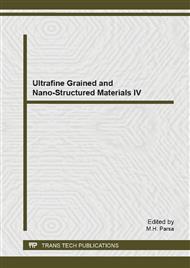p.836
p.841
p.846
p.851
p.857
p.862
p.869
p.874
p.879
Protection of High-Tech Buildings Facades and Envelopes with One Sided Nano-Coatings
Abstract:
Pollution on building façades deteriorates buildings' image and causes structural problems as well as aesthetic issues. It is necessary to clean up pollutants from façades to prevent erosion of materials and further unpleasant consequences. Nowadays emergence of new skyscrapers increased and considerable amount of money wasted each year for façade cleaning processes. Thus it is necessary to find new methods to protect buildings facades by usage of recombinant nanomaterials and nanocoatings. Nanotechnology opens a new window in front of building industry and high technology in construction. Literature review of the paper shows that the most of pollutant origin is presence of moisture in air as well as building mortars. While current methods of cleaning pollutants accelerate erosion. The most important aim of this research is finding some waterproof coating that can protect building facades from variety of pollutants. In theoretical points of view here is dilemma about moisture conduction. Usage of waterproof coating may cause considerable damages to mortar of buildings' walls because the architectural elements in need of some occasions to be dried, especially masonry constructed buildings which have to be dried in a long period of time. Therefore the important issue is necessity existence of ventilation in order to moisture in mortar can be dried. Usages of waterproof coatings isolate the moisture in mortar behind coating layer and will result in decay. Our experimental studies show that Silane and Siloxane nanocoatings may help building facades resist against pollutants especially in high-tech architecture.
Info:
Periodical:
Pages:
857-861
Citation:
Online since:
November 2013
Price:
Сopyright:
© 2014 Trans Tech Publications Ltd. All Rights Reserved
Share:
Citation:


